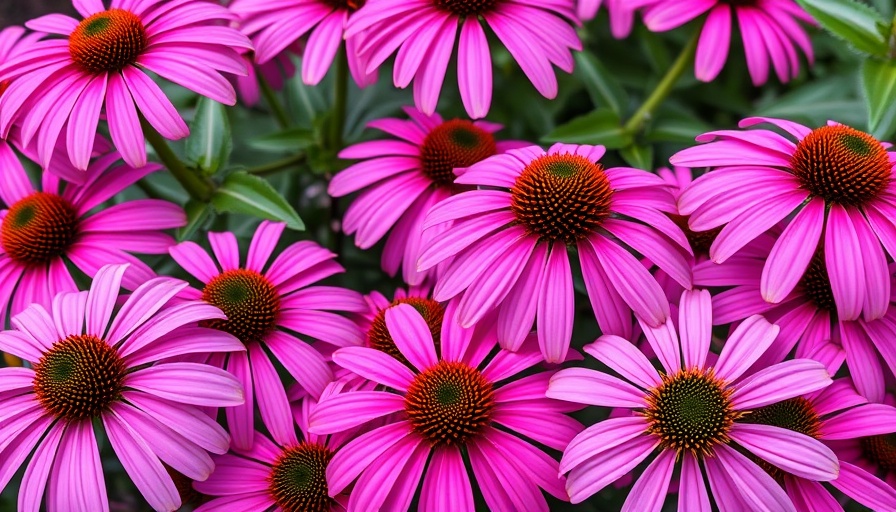
Transform Your Space with Gorgeous Coneflowers in Containers
Coneflowers, known botanically as Echinacea, have come a long way from their prairie roots to becoming garden favorites recognized for both their beauty and medicinal properties. If you’ve ever dreamed of adding these stunning flowers to your small garden or patio, you’re in luck! Coneflowers thrive in containers, allowing you to enjoy their vibrant colors and benefits even in limited spaces.
Choosing the Right Container for Coneflowers
When it comes to growing coneflowers in pots, selecting the right container is crucial. These hardy plants develop deep roots, particularly the less cultivated species, which can reach impressive lengths. To accommodate their growth, look for containers that are about 24 inches deep for species with taproots. For the common variety, E. purpurea, a pot 12 inches deep and wide can suffice. This attention to depth ensures that your coneflowers have the space they need to thrive.
Soil Matters: Setting Up Your Coneflower Pot
After selecting a pot with the right depth, your next step is to think about the soil. A well-draining, nutrient-rich potting mix is ideal for coneflowers. Organic gardening practices suggest using soil that is amended with compost to improve drainage and nutrient content while also fostering healthy soil biology. This way, your coneflowers can not only grow but also flourish, resonating with the landscape’s natural charm.
Planting: Timing is Everything!
The best time to plant your coneflowers is in the spring after the last frost. However, if you’re planting them indoors or in a controlled environment, you might consider beginning this process a bit earlier to get a jump on the growing season. Ensure the pots have proper drainage holes to prevent waterlogging, which can be detrimental to root health.
Finding the Perfect Spot for Your Coneflowers
Once planted, the right location can make a world of difference. Coneflowers thrive in full sunlight, so place your pots in an area that receives at least six to eight hours of sunlight a day. If you live in a hotter climate, some afternoon shade can protect them from scorching, allowing these beauties to bloom longer.
Maintenance and Care for Healthy Coneflowers
Maintaining your coneflowers is an enjoyable task! Regular watering is essential, especially during dry spells. However, be cautious not to overwater—ensure the soil is moist but not soggy. Fertilizing every few weeks during the growing season with a balanced liquid fertilizer will keep your plants vibrant and healthy. Don't forget to deadhead the flowers occasionally to encourage continuous blooms.
Coneflower Varieties to Consider in Container Gardening
There are several coneflower species that adapt beautifully to container gardening. E. purpurea is the most common and widely available. Other varieties like E. angustifolia and E. pallida offer unique colors and characteristics if you’re looking to diversify your container garden. Mix and match different species for stunning visual effects and companions that attract pollinators, enhancing your garden's ecosystem.
Enjoying the Beauty and Benefits of Coneflowers
Apart from their attractiveness, coneflowers are renowned for their potential health benefits. These plants promote wellness through their anti-inflammatory properties and are essential for supporting pollinators such as bees and butterflies, making them a fantastic addition to any garden enthusiast’s containers. Their ability to thrive in various conditions also makes them a perfect choice for gardeners of all experience levels.
Conclusion: Start Your Container Garden Today!
Growing coneflowers in containers allows you to enjoy these stunning plants regardless of space constraints. With the right container, soil, and care routine, you can cultivate a vibrant display that brightens up your outdoor area while also benefiting local wildlife. Ready to plant your coneflowers? Take these tips and start your container garden journey today!
 Add Row
Add Row  Add
Add 




Write A Comment